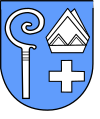Kwidzyn
| Kwidzyn | |||
|---|---|---|---|

Photos of Kwidzyn
|
|||
|
|||
| Coordinates: 53°44′9″N 18°55′51″E / 53.73583°N 18.93083°E | |||
| Country |
|
||
| Voivodeship | Pomeranian | ||
| County | Kwidzyn County | ||
| Gmina | Kwidzyn (urban gmina) | ||
| Established | 11th century | ||
| Town rights | 1233 | ||
| Government | |||
| • Mayor | Andrzej Krzysztof Krzysztofiak | ||
| Area | |||
| • Total | 21.82 km2 (8.42 sq mi) | ||
| Elevation | 42 m (138 ft) | ||
| Population (2006) | |||
| • Total | 37,814 | ||
| • Density | 1,700/km2 (4,500/sq mi) | ||
| Time zone | CET (UTC+1) | ||
| • Summer (DST) | CEST (UTC+2) | ||
| Postal code | 82-500 | ||
| Area code(s) | +48 55 | ||
| Car plates | GKW | ||
| Website | http://www.kwidzyn.pl | ||
Kwidzyn (Polish pronunciation: [ˈkfʲid͡zɨn]; Latin: Quedin; German: Marienwerder; Prussian: Kwēdina) is a town in northern Poland on the Liwa river in the Powiśle (right bank of Vistula) region, with 40,008 inhabitants (2004). It has been a part of the Pomeranian Voivodeship since 1999, and was previously in the Elbląg Voivodeship (1975–1998). It is the capital of Kwidzyn County.
The Teutonic Knights founded an Ordensburg castle in 1232 and a town the following year. In 1243 the Bishopric of Pomesania received both the town and the castle of Marienwerder (German for "Mary's ait") from the Teutonic Order as fiefs, and the settlement became the seat of the Bishops of Pomesania within Prussia. The town was populated with Masurian settlers. Werner von Orseln, who died in Marienburg (Malbork) in 1330, was buried in the cathedral of the town. St. Dorothea of Montau lived here from 1391 until her death in 1394; pilgrims would later come to pray in the town at her shrine. The rebellious Prussian Confederation was founded in the town on March 14, 1440. In 1466, the town became a Polish fief together with the remainder of the monastic state of the Teutonic Knights after their defeat in the Thirteen Years' War.
...
Wikipedia



